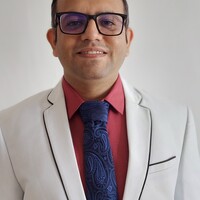What is myelodysplastic syndrome?
The area inside some bones has a spongy tissue called bone marrow, which contains stem cells. These stem cells are immature cells which can develop into red blood cells (RBCs), white blood cells (WBCs) and platelets. RBCs are the oxygen carrier, WBCs fight against infections and platelets helps in blood clotting. When myelodysplastic syndrome (MDS) or myelodysplasia occurs, the stem cells do not mature into the necessary blood cells and die inside the bone marrow. The lack of healthy blood cells can lead to anaemia, infection, or bleeding, based on which type of cells are produced in deficiency.
What are its main signs and symptoms?
There are no early symptoms, but the following symptoms may appear
- Fatigue
- Weakness
- Increased rate of infections
- Fever
- Pale skin
- Difficulty in breathing
- Easy bleeding
- Bone pain
- Weight loss
- Loss of appetite
- Spots observed under the skin due to bleeding
What are its main causes?
MDS can be divided into the following categories depending upon its cause:
- Primary MDS: The cause remains unknown. It is the most common type.
- Secondary MDS: The cause is a treatment procedure like chemotherapy. It is also known as treatment-related MDS.
MDS is not genetic and doesn't run in families, but in some rare cases, it may get transferred from a parent to child.
How is it diagnosed and treated?
The following tests are performed for the diagnosis of MDS:
- Blood tests: The change in the blood count and normal and abnormal cells in blood is detected
- Bone marrow test: Local anaesthesia is used to obtain a bone marrow sample using a needle, and it is tested for lack of stem cells.
- Cytogenetic tests: These help to identify the type of disease
Other tests to determine the general health status are X-ray and electrocardiogram.
The exact treatment depends on multiple factors like type of MDS, age, general health, etc. The following are the treatment options available for MDS:
- Chemotherapy: It is a chemical treatment which aims to reduce the number of abnormal cells in the bone marrow.
- Stem cell transplantation: Stem cells from an appropriately matched donor are transplanted into the recipient’s marrow but are suitable only in selected patients.
- Medications: It may include various drugs like an immune booster, biological modifiers, chemotherapy drugs, etc.
- Supportive care: It is the mainstay of the treatment to improve the overall quality of life.

 Doctors for Myelodysplastic Syndrome
Doctors for Myelodysplastic Syndrome  OTC Medicines for Myelodysplastic Syndrome
OTC Medicines for Myelodysplastic Syndrome

















